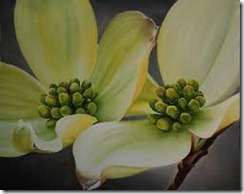-
The flowering dogwood is used in commercial landscaping as well as in landscaping around homes. The tree produces an abundance of white, red or pink flowers in the spring. The dogwood tree is hardy and tolerant of different living conditions, but is not without its share of problems. This tree suffers from parasites and disease, and while it is tolerant of less-than-ideal living conditions, it may be difficult for dogwoods to adjust initially.
Stress
-
The dogwood is a hardy species of tree, but stress in the environment may weaken the tree and leave it open to attack by disease or insects. Environmental stress factors vary depending on where the tree is planted. Dogwoods prefer shady environments with stable, undisturbed earth. This is often hard to come by in a home or commercial setting. Lawn mowers and weed trimmers often leave tiny cracks in the tree’s surface, allowing disease or parasites an easy access point. Inadequate moisture or extreme temperatures also weaken the tree, making it prone to more serious problems.
Insects
-
Synanthedon scitul, or the dogwood borer, is an insect that infests dogwood trees. This insect is a small moth with a blue back covered in yellow bands. It flies by day, landing on dogwood trees and laying its eggs in damaged or wounded spots on the tree. After about two weeks, the eggs hatch into larvae which bore into the tree. The larvae feed on the wood inside the tree, where they are protected from insecticides. The larvae often remain undetected until serious damage is done to the tree. Treatment involves inspecting the trees for problems regularly in order to apply insecticides to borers before they get into the tree, and removing badly infested trees to prevent infestation of healthy trees.
Dogwood Anthracnose
-
Caused by a fungus, dogwood anthracnose produces leaf spots, stem cankers and death of new shoots on the tree. Lesions on the tree, spots on the leaves and dark stains on the tree trunk beneath the bark are indicative of the problem. Treatment of this common dogwood disease involves use of antifungal sprays, removal of diseased tree parts and removal of badly diseased trees to maintain the health of the remaining trees. Pruning low branches on the tree and improving air flow around the tree may help prevent this disease from occurring in the first place.
Powdery Mildew
-
Powdery mildew produces small, dark red spots and splotches on the surface of the dogwood’s leaves that eventually become dead spots. When a tree becomes infected with a fungus that causes powdery mildew, new leaves may become yellowed or withered and the entire tree may have a grayish-white dusty look. Fungicide sprays are very effective against powdery mildew, with prevention methods including regular fungicide application, pruning and regular inspection of the tree to keep you aware of any new fungal problems.


Deprecated: strpos(): Passing null to parameter #1 ($haystack) of type string is deprecated in /home/agriviek8Qv/agriviet.net/public_html/wp-includes/comment-template.php on line 2522